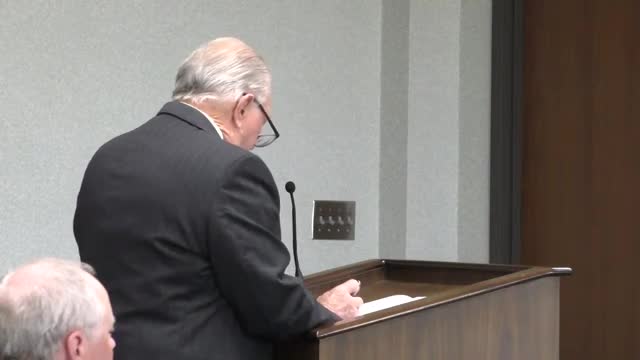Alabama secures vital funding boost for water program
June 15, 2024 | Alabama Department of Environmental Management , State Agencies, Executive, Alabama

This article was created by AI summarizing key points discussed. AI makes mistakes, so for full details and context, please refer to the video of the full meeting. Please report any errors so we can fix them. Report an error »

In a recent government meeting, officials provided a comprehensive status report focusing on critical funding issues, particularly concerning Alabama's water program. The discussion highlighted the department's reliance on the state general fund, which has contributed approximately 6% of the department's $65 million operating budget over the past five years. This funding is essential for matching federal allocations from the State Revolving Fund and the Bipartisan Infrastructure Law.
The report underscored Alabama's historically low per capita funding for environmental agencies, which has raised concerns about the sustainability of the water program. An analysis indicated that, accounting for inflation since the last funding increase in 2020, an additional $14 million would be necessary to meet current operational demands. This figure does not encompass the financial implications of new regulatory mandates related to PFAS, greenhouse gases, and coal combustion.
The meeting also addressed the challenges posed by the lack of funding mechanisms in the Federal Clean Water Act, which has historically hindered the water program's financial stability. Previously, funding from land and air programs helped support water initiatives, but inflation has now restricted these transfers, exacerbating the funding crisis.
Officials warned that an underfunded water program could lead to unstable regulatory oversight, increased federal Environmental Protection Agency (EPA) involvement, and higher compliance costs due to stricter discharge limits if water quality deteriorates.
On a positive note, the meeting revealed that the recently adopted fiscal year 2025 budget includes a $6 million increase in operational funds for the water program, a move welcomed by officials as a step towards addressing the funding shortfall. Additionally, to combat inflation and retain state employees, a 2% across-the-board salary increase for all state employees was approved, effective October 1st.
The report underscored Alabama's historically low per capita funding for environmental agencies, which has raised concerns about the sustainability of the water program. An analysis indicated that, accounting for inflation since the last funding increase in 2020, an additional $14 million would be necessary to meet current operational demands. This figure does not encompass the financial implications of new regulatory mandates related to PFAS, greenhouse gases, and coal combustion.
The meeting also addressed the challenges posed by the lack of funding mechanisms in the Federal Clean Water Act, which has historically hindered the water program's financial stability. Previously, funding from land and air programs helped support water initiatives, but inflation has now restricted these transfers, exacerbating the funding crisis.
Officials warned that an underfunded water program could lead to unstable regulatory oversight, increased federal Environmental Protection Agency (EPA) involvement, and higher compliance costs due to stricter discharge limits if water quality deteriorates.
On a positive note, the meeting revealed that the recently adopted fiscal year 2025 budget includes a $6 million increase in operational funds for the water program, a move welcomed by officials as a step towards addressing the funding shortfall. Additionally, to combat inflation and retain state employees, a 2% across-the-board salary increase for all state employees was approved, effective October 1st.
View full meeting
This article is based on a recent meeting—watch the full video and explore the complete transcript for deeper insights into the discussion.
View full meeting
